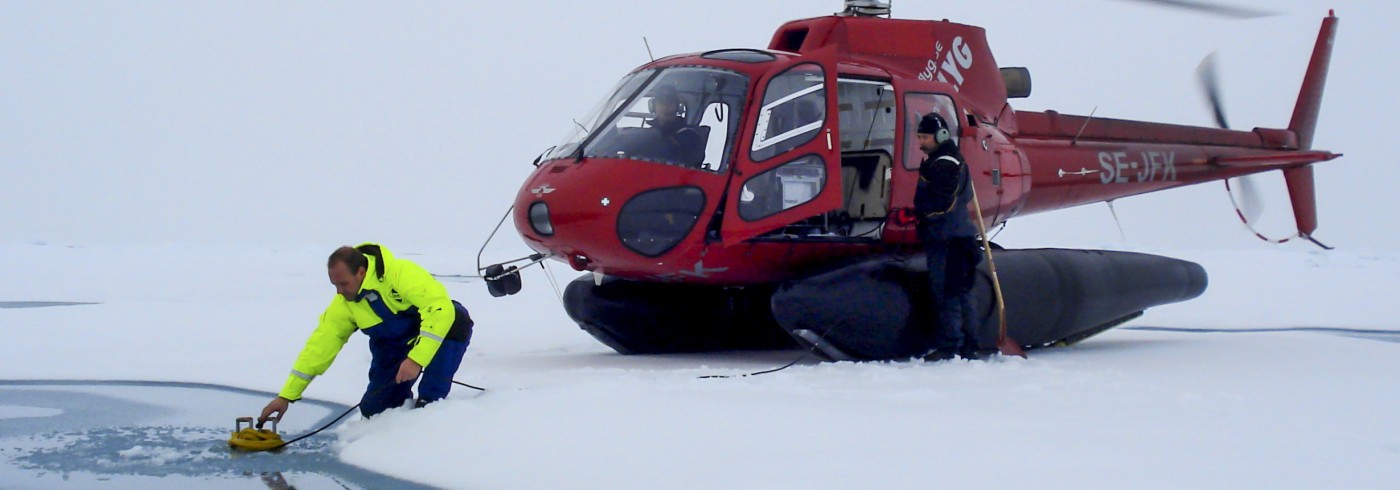Microbial respiration in Arctic sea ice
31 July 2009 - 10 September 2009
Ice coring procedure. A hand powered KO VACS ice corer was used to create a hole for in situ measurements of CO2 flux and to obtain samples for biological analysis. To prevent contamination, cores were placed in a trench cleared of snow. Pictured: Jeff Bowman. Photo: Matthias Wietz
This project seeks to establish how large a role microbial respiration plays in determining the concentration of CO2 within both first-year and multi-year sea ice, and thus influencing the exchange of CO2 between sea ice and the atmosphere. Ice cores were retrieved at a total of 14 ice stations.
To measure the f lux of CO2 in situ a hand powered KOVACS ice core drill was used to create a hole (picture), into which a diffusion model infrared CO2 probe with an airtight rubber gasket was inserted. The concentration of CO2 within the headspace between the ice freeboard and the probe was monitored during the station visit at one-minute intervals. To determine the physical characteristics an ice core was removed and drilled along its length. The interior temperature was measured through the drill holes. A second core was obtained for biological analysis. These analyses include cell count (DAPI), aerobically active cell count (CTC), community fingerprint (T-RFLP or ARISA), chlorophyll content, particulate and dissolved organic carbon and δ13C values, and measurement of dissolved and particulate extracellular polysaccharide substances (EPS). A third core was obtained for incubation experiments. An atmospheric air sample was obtained at each site for carbon stable isotope analysis.
On return to Oden the ice core incubation chamber was placed in a refrigerator held at 1˚C. Ice prepared at -80˚C was used to lower the temperature to 0˚C or slightly cooler. The concentration of CO2 in the headspace of the incubation chamber was monitored over approximately 44 hours. Values for δ13C of CO2 produced during the incubation period will be determined to evaluate respiratory activity. Sections designated for filtration from the second core were melted in sterile filtered artificial seawater (ASW). This melting procedure maintained the salinity at around the approximate salinity of brine channels within the ice through the melting process. Once melted, the total volume of ASW and sample was determined, and measured quantities of the melt solution were filtered for each analysis.
All analyses will be conducted at the University of Washington’s School of Oceanography, Seattle, USA, except for the stable isotope analysis. This analysis will be conducted at the Stable Isotope Lab of the Department of Earth and Space Sciences, University of Washington. The signal from preliminary in situ CO2 measurements was highly variable, with no obvious correlation to ice depth or type (first year or multiyear). As additional biological parameters become available, it is hoped to gain some understanding of the mechanisms shaping these signals. Preliminary results from the core incubations show a wide variation in signal. In all cases however, the sea ice was initially undersaturated in CO2 and readily absorbed CO2 from the incubation chamber head space. After equilibrium was reached an increase in CO2 concentration within the headspace (hypothesized to be the result of microbial respiration) was apparent in most incubations. The timing and strength of this increase varied widely between cores.

